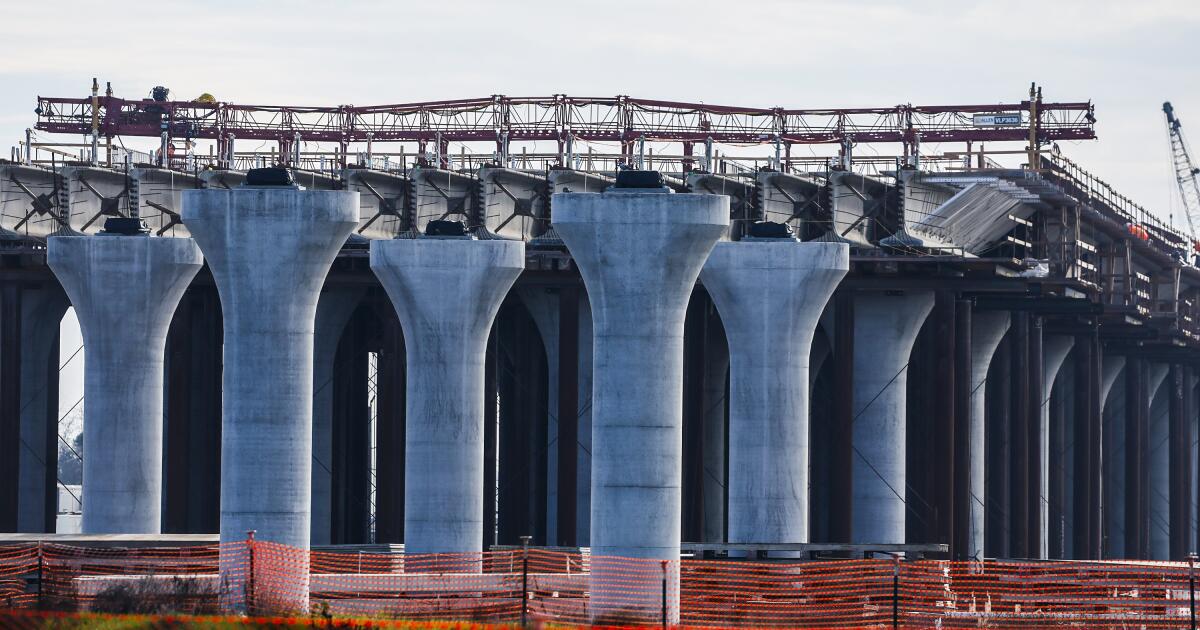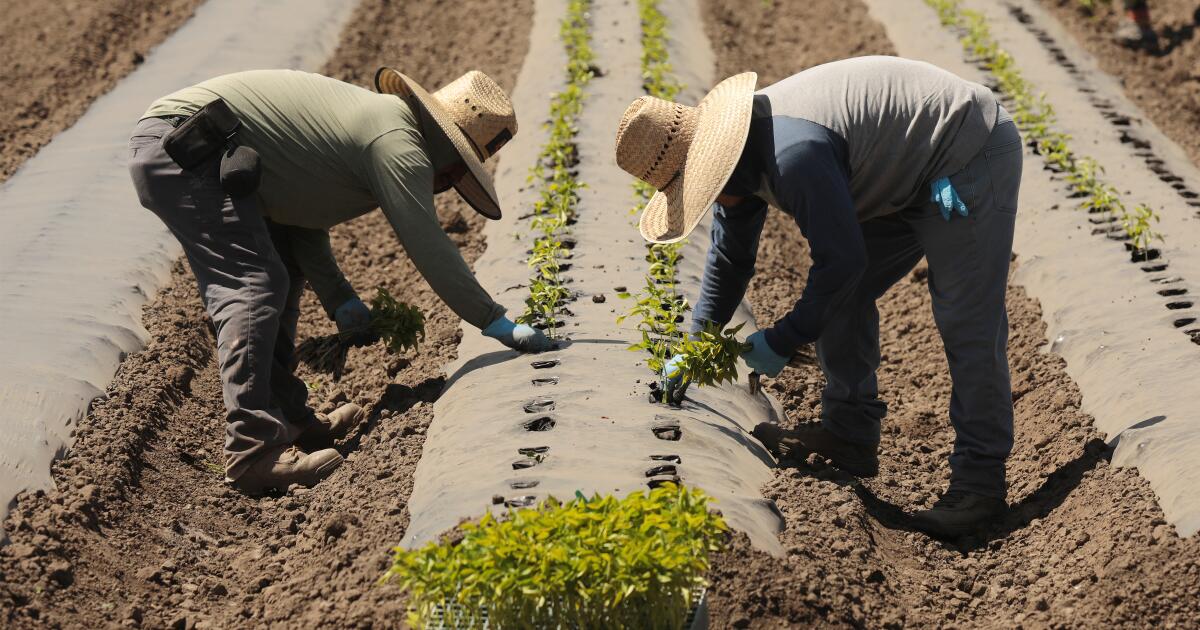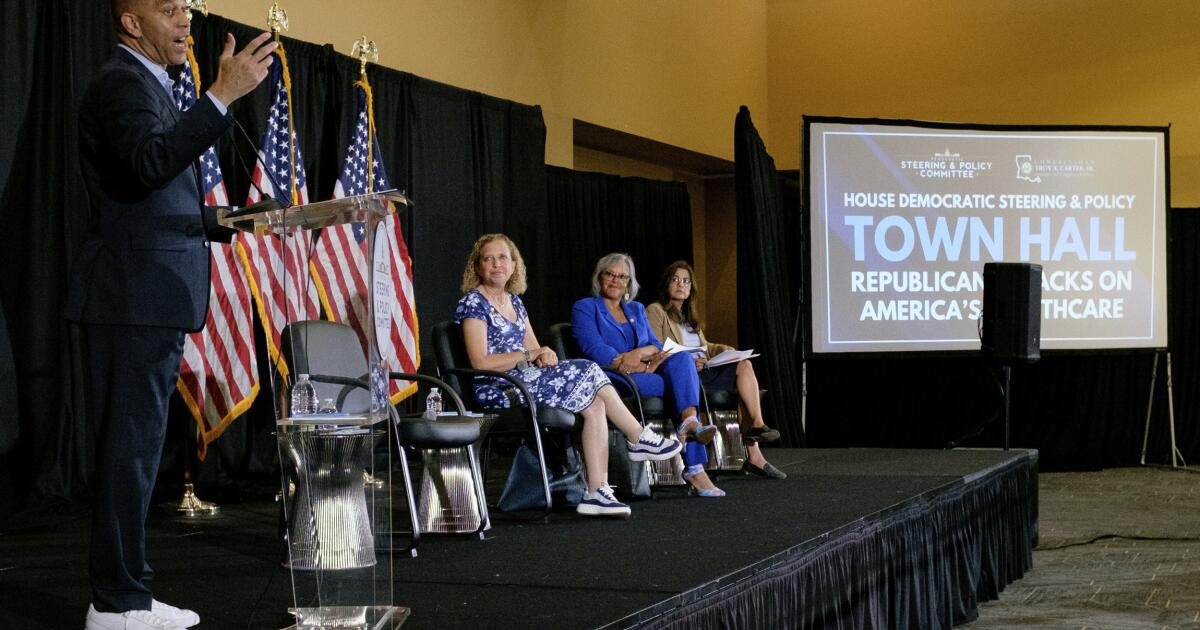WASHINGTON — Debate over President Trump’s sweeping budget-and-policy package is over on Capitol Hill. Now the argument goes national.
From the Central Valley of California to Midwestern battlegrounds and suburban districts of the northeast, the new law already is shaping the 2026 midterm battle for control of the House of Representatives. The outcome will set the tone for Trump’s final two years in the Oval Office.
Democrats need a net gain of three House seats to break the GOP’s chokehold on Washington and reestablish a power center to counter Trump. There’s added pressure to flip the House because midterm Senate contests are concentrated in Republican-leaning states, making it harder for Democrats to reclaim that chamber.
As Republicans see it, they’ve now delivered broad tax cuts, an unprecedented investment in immigration enforcement and new restraints on social safety net programs. Democrats see a law that rolls back health insurance access and raises costs for middle-class Americans while cutting taxes mostly for the rich, curtailing green energy initiatives and restricting some workers’ organizing rights.
“It represents the broken promise they made to the American people,” said Rep. Suzan DelBene, a Washington Democrat who chairs the party’s House campaign arm. “We’re going to continue to hold Republicans accountable for this vote.”
Parties gear up for a fight
Whether voters see it that way will be determined on a district-by-district level, but the battle will be more intense in some places than others. Among the 435 House districts, only 69 contests were decided by less than 10 percentage points in the 2024 general election.
The Democratic Congressional Campaign Committee has identified 26 Democratic-held seats it must defend vigorously, along with 35 GOP-held seats it believes could be ripe to flip. Republicans’ campaign arm, the National Republican Congressional Committee, has listed 18 GOP incumbents as priorities, plus two districts opened by retirements.
There are a historically low number of so-called crossover districts: Only 13 Democrats represent districts that Trump carried in 2024, while just three Republicans serve districts that Democratic presidential nominee Kamala Harris carried.
Both committees are busy recruiting challengers and open-seat candidates, and more retirements could come, so the competitive map will evolve. Still, there are clusters of districts guaranteed to influence the national result.
California, despite its clear lean to Democrats statewide, has at least nine House districts expected to be up for grabs: three in the Central Valley and six in Southern California. Six are held by Democrats, three by the GOP.
Pennsylvania features four districts that have been among the closest U.S. House races for several consecutive cycles. They include a suburban Philadelphia seat represented by Rep. Brian Fitzpatrick, one of just two House Republicans to vote against Trump’s bill and one of the three GOP lawmakers from a district Harris won. Fitzpatrick cited the Medicaid cuts.
Vice President JD Vance plans on Wednesday to be in Republican Rep. Robert Bresnahan’s northwest Pennsylvania district to tout the GOP package. Bresnahan’s seat is a top Democratic target.
Iowa and Wisconsin, meanwhile, feature four contiguous GOP-held districts in farm-heavy regions where voters could be swayed by fallout from Trump’s tariffs.
Democrats fight to define the GOP
Beyond bumper-sticker labels — Trump’s preferred “Big Beautiful Bill” versus Democrats’ “Big Ugly Bill” retort — the 900-page law is, in fact, an array of policies with varying effects.
Democrats hammer Medicaid and food assistance cuts, some timed to take full effect only after the 2026 midterms, along with Republicans’ refusal to extend tax credits to some people who obtained health insurance through the Affordable Care Act.
The Congressional Budget Office estimates that 11.8 million more Americans would become uninsured by 2034 if the bill became law; 3 million more would not qualify for food stamps, also known as SNAP benefits.
“Folks will die here in Louisiana and in other parts of the country,” House Minority Leader Jeffries warned last week during a town hall in Republican Speaker Mike Johnson’s home state of Louisiana.
Jeffries singled out vulnerable Republicans such as California Rep. David Valadao of Hanford, who represents a heavily agricultural Central Valley district where more than half of the population is eligible for the joint state-federal insurance program. California allows immigrants with legal status and those who are undocumented to qualify for Medicaid, so not all Medicaid recipients are voters. But the program helps finance the overall healthcare system, including nursing homes and hospitals.
Republicans highlight the law’s tightened work requirements for Medicaid enrollees. They argue that it’s a popular provision that will strengthen the program.
“I voted for this bill because it does preserve the Medicaid program for its intended recipients — children, pregnant women, the disabled, and elderly,” Valadao said. “I know how important the program is for my constituents.”
Republicans hope voters see lower taxes
The law includes $4.5 trillion in tax cuts. It makes permanent existing rates and brackets approved during Trump’s first term. Republicans and their allies have hammered vulnerable Democrats for “raising costs” on American households by opposing the bill.
GOP campaign aides point to the popularity of individual provisions: boosting the $2,000 child tax credit to $2,200 (some families at lower income levels would not get the full credit), new deductions on tip and overtime income and auto loans; and a new deduction for older adults earning less than $75,000 a year.
“Everyone will have more take-home pay. They’ll have more jobs and opportunity,” Johnson said in a Fox News Sunday interview. “The economy will be doing better and we’ll be able to point to that as the obvious result of what we did.”
Democrats note that the biggest beneficiaries of Trump’s tax code are wealthy Americans and corporations. Pairing that with safety net cuts, Florida Rep. Debbie Wasserman Schultz concluded, “The cruelty is the point.”
Immigration, meanwhile, was Trump’s strongest issue in 2024. NRCC aides say that will continue with the new law’s investments in immigration enforcement. Democrats believe that the Trump administration has overplayed its hand with its push for mass deportation.
Playing the Trump card
The president is a titanic variable.
Democrats point to 2018, when they notched a 40-seat net gain in House seats to take control away from the GOP. This year, Democrats have enjoyed a double-digit swing in special elections around the country when compared with 2024 presidential results. Similar trends emerged in 2017 after Trump’s 2016 victory. Democrats say that reflects voter discontent with Trump once he’s actually in charge.
Republicans answer that Trump’s job approval remains higher at this point than in 2017. But the GOP’s effort is further complicated by ongoing realignments: Since Trump’s emergence, Democrats have gained affluent white voters — like those in suburban swing districts — while Trump has drawn more working-class voters across racial and ethnic groups. But Republicans face a stiffer challenge of replicating Trump’s coalition in a midterm election without him on the ballot.
Democrats, meanwhile, must corral voters who are not a threat to vote for Republicans but could stay home.
Jeffries said he’s determined not to let that happen: “We’re going to do everything we can until we end this national nightmare.”
Barrow, Cooper and Brook write for the Associated Press. Cooper reported from Phoenix and Brook reported from New Orleans. AP reporters Michael Blood in Los Angeles and Marc Levy in Harrisburg, Pa., contributed to this report.


